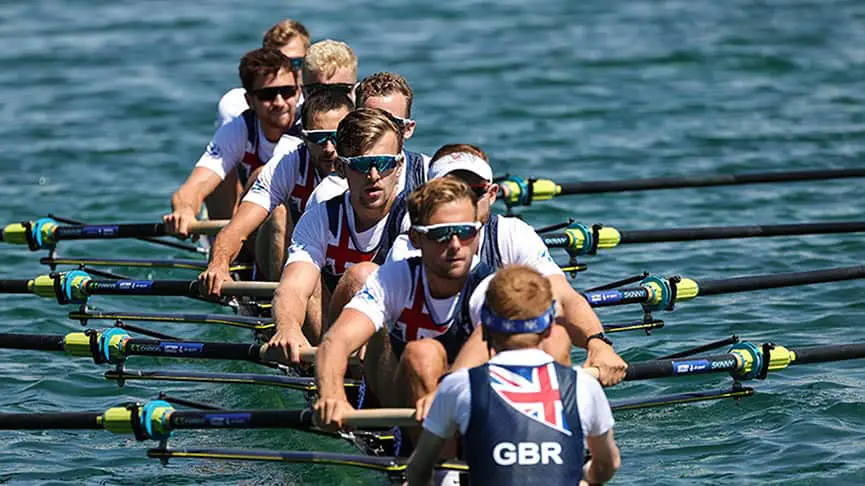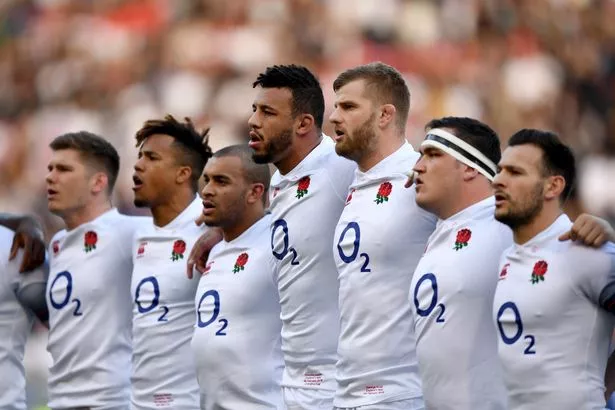Sports play a vital role in British culture, shaping communities, traditions, and even national identity. From world-famous football clubs to the historic charm of cricket, the United Kingdom has a deep-rooted sporting heritage.
The most popular sport in England continues to dominate global audiences, while other disciplines, from rugby to tennis, reflect the nation’s competitive spirit and passion for athletic excellence.
Whether it’s cheering in stadiums or participating at the grassroots level, these activities define the national sports of England and showcase the country’s long-standing love affair with sport.
10. Netball

Netball was first played in England in 1895, marking the beginning of the sport’s deep-rooted history in the United Kingdom.
The England national netball team, also known as the Vitality Roses, was officially established in 1963 and has participated in every edition of the Netball World Cup since its inception.
Across England, there are approximately 500 registered netball clubs & these clubs compete in various local and national leagues.
Netball is currently recognized as the most popular sport for female participation in the UK, with growing visibility and support across all age groups.
Prominent players such as Serena Guthrie, Joanne Harten, and Geva Mentor have been instrumental in elevating the national team on the global stage.
In recent years, the England women’s netball team has achieved significant victories against traditionally dominant teams such as Australia and New Zealand, signaling a shift in competitive dynamics within international netball.
9. Rowing

The modern form of competitive rowing originated in the 18th century, with significant development occurring during the 1700s in the United Kingdom.
As one of the oldest sports in the world with a modern competitive structure, it has a revered place in British sporting culture.
The first official rowing race took place in 1829 with the inauguration of the historic Oxford-Cambridge Boat Race, a prestigious annual event contested between the University of Oxford and the University of Cambridge on the River Thames.
In addition to the Oxford-Cambridge Boat Race, the Henley Royal Regatta stands out as one of the most prominent and long-standing rowing competitions held annually in the UK.
Rowing in the UK is governed and structured through British Rowing, the national governing body for the sport.
There are over 550 affiliated rowing clubs across the country, with individual athletes typically registered through these clubs.
One of the most celebrated athletes in British rowing history is Sir Steven Geoffrey Redgrave, who secured five consecutive Olympic gold medals for Great Britain, making him a legendary figure in the sport.
Today, rowing in the UK continues to grow across both Olympic and Paralympic disciplines, reflecting its expanding reach and inclusivity within national and international sporting communities.
8. Ice Hockey

Ice hockey has been played in the United Kingdom since the early 20th century, establishing a long-standing presence in British winter sports.
While it doesn’t rival the popularity of hockey in the Canada’s most popular sport, it has a dedicated and growing following.
In 1908, Great Britain became a founding member of the International Ice Hockey Federation (IIHF), marking its official integration into the global ice hockey community.
The sport gained significant popularity in the 1930s, emerging as a prominent competitive activity across the UK.
Today, the Elite Ice Hockey League (EIHL) represents the highest level of professional ice hockey in the country.
Alongside it, the National Ice Hockey League (NIHL) serves as a tier of semi-professional leagues, organized under the governance of the English Ice Hockey Association (EIHA).
Several players have made a lasting impact on British ice hockey, including Ben Bowns, Carl Erhardt, and Ben O’Connor, each recognized as among the most notable athletes to represent the UK in international and domestic competitions.
By 2010, ice hockey had become widely recognized as the fastest-growing winter sport and the largest indoor team sport in the UK, often thrilling crowds in major venues, though not yet on the scale of the biggest indoor arena.
7. Athletics

Athletics in England was officially organized following the establishment of the British Athletics Federation in 1999, marking a significant milestone in the sport’s modern governance.
Since its formal inception, athletics has grown into one of the UK’s leading sports, with active competition at both domestic and international levels.
It’s also universally acknowledged as one of the most physically demanding sports, requiring peak conditioning.
The British Athletics League serves as the national men’s track and field league, comprising 38 athletic clubs distributed across five divisions.
Athletics remains one of the most widely participated in sports in the UK. In 2019, approximately 211,000 individuals engaged in track and field activities, according to national participation data, underscoring the sport’s widespread appeal and foundational role in British physical culture.
6. Swimming

Swimming emerged as a competitive sport in England during the early 1800s, with initial competitions laying the foundation for organized aquatic events.
In 1837, the National Swimming Society was established to host regular swimming competitions across the United Kingdom, marking a pivotal step in the formal development of the sport.
In 2014, British Swimming became the central governing body for competitive swimming in the UK, overseeing national championships across all major disciplines, including freestyle, backstroke, breaststroke, and butterfly.
There are currently over 1,200 affiliated swimming clubs operating within a structured system of sub-regional, regional, and national governance, fostering grassroots participation and high-performance development throughout the country.
Notable British swimmers such as Rebecca Adlington and Adam Peaty (full name: Adam George Peaty) have become internationally recognized for their achievements in Olympic and World Championship competitions.
With a history of securing 35 international titles, the United Kingdom remains one of the world’s leading nations in producing elite competitive swimmers.
5. Boxing

Boxing remains a highly popular sport in the United Kingdom in 2025, especially among younger adults aged 16 to 34, with nearly 9% of people in this age group participating monthly.
Men are more than twice as likely as women to engage in boxing regularly, with around 5.9% of men and 2.9% of women boxing at least monthly.
The sport’s appeal extends beyond competition to fitness, with monthly Google searches exceeding 20,000 for “boxing clubs near me” and over 10,000 for “boxing classes near me.”
The UK has a rich pugilistic history, producing some of the best British boxers ever, who inspire new generations to step into the ring.
Boxing offers a high-calorie-burning workout and a pathway for youth and amateur athletes, making it an enduring favorite for fitness and sport alike across the UK population.
4. Tennis

Tennis has become very popular in the United Kingdom, with more people playing the sport than ever before in recent years.
According to the Lawn Tennis Association (LTA) and Sport England data, around 915,000 adults in England played tennis regularly (at least twice in the last 28 days) between 2021 and 2022.
This represents a 43% increase compared to the previous year, driven partly by the success of British tennis stars like Andy Murray and increased grassroots initiatives.
Over the last five years (2019–2023), overall annual adult participation in Britain surged by 44% to approximately 5.6 million people, which is about 10% of the UK population.
Children’s participation is also significant, with 3.6 million children (around 40% of the youth population) playing tennis annually.
The UK leads globally in tennis popularity on a per-capita basis, outpacing other top tennis nations such as the USA, France, and Australia.
This is a notable distinction, as it surpasses the per-capita participation rates seen in the most popular sports in Australia and the most popular sports in America.
This rise is supported by major investments in community courts and accessible play options, including free park tennis sessions and digital tools for booking courts and finding partners.
The iconic Wimbledon Championships further amplify the sport’s profile, attracting millions of viewers and reinforcing tennis as a cultural cornerstone in the UK.
3. Rugby Union

Rugby maintains a significant cultural and participation presence in the United Kingdom, despite some regional variation in trends as of 2025.
In England, adult rugby union participation has seen a slight decline from around 260,000 players in 2016 to fewer than 225,000 in recent years.
However, the sport is growing robustly among women, with participation numbers nearly doubling in Scotland between 2018 and 2024, and growing substantially in England through strategic investments and grassroots programs.
Wales stands out with healthy rugby union growth, driven by strong local interest and historic ties to the sport, reinforced by national pride in competitions like the Six Nations Championship.
The upcoming 2025 Women’s Rugby World Cup in England is set to be a transformative event for rugby, especially women’s rugby, with matches hosted across multiple cities, including London and Manchester, and the final at Twickenham Stadium, renamed Allianz Stadium.
This legendary venue is one of the largest dedicated to rugby, though it doesn’t quite match the capacity of the biggest stadium.
The tournament is expected to break attendance records and boost visibility significantly, further fueling participation and fan engagement.
Women’s rugby in the UK benefits from major investments through campaigns like the RFU’s Impact ’25.
2. Cricket

Cricket remains one of the most popular and one of the most watched sports in England.
Data from the England and Wales Cricket Board (ECB) highlights a record year with total cricket engagement reaching 14.7 million people across playing, attending, and following the sport, boosted notably by the thrilling Men’s and Women’s Ashes series that captured national attention.
Women’s and girls’ cricket is experiencing rapid growth, with a 22% increase in the number of women’s and girls’ teams and record-breaking attendance figures.
Despite strong overall growth, participation among younger males aged 16 to 24 has declined sharply in recent years.
English cricketers, particularly through the success of the national team in high-profile tournaments, have significantly boosted the sport’s profile.
The introduction of The Hundred has been a major factor, attracting a new, broader audience with its fast-paced, family-friendly format. This has helped make cricket more accessible and popular across the UK.
This exciting league aims to showcase the sport’s elite talent, contributing to the debate about the best cricket league in the world.
New, fast-paced formats like The Hundred are attracting a younger and more diverse audience: 31% of its fans are aged 18-44.
1. Football

Football remains the most popular sport in the United Kingdom in 2025, both in terms of participation and spectatorship.
Approximately 2.1 million people in England alone play football regularly, engaging in the sport at least twice per month.
Football dominates the team sports landscape, especially among school-aged children in England and Wales, underlining its deep cultural roots and widespread grassroots presence.
Unlike many of the difficult sports to master at a professional level, its basic principles are among the easiest sports to play at a recreational level, which contributes to its mass appeal.
The professional game is structured around multi-tier leagues, with the Premier League standing out as the most prominent football league not only in the UK but worldwide.
The Premier League boasts the highest revenue and brand value among European sports leagues, with average match attendances of nearly 30,000 fans per game.
Clubs such as Manchester United, Liverpool, Arsenal, and Manchester City command strong followings.
These clubs are also counted among the most successful English football clubs, with histories stretching back to some of the oldest English football clubs.
Football also commands the largest live sports following in the UK, with 61% of live sports event attendees watching men’s football, and 56% of TV sports viewers tuning into football matches, making it most watched sport in the UK.
The sport’s influence is further strengthened by competition success, with several English clubs regularly participating in the UEFA Champions League, enhancing football’s international appeal in the UK.
The overall UK football market was valued at approximately USD 422 million in 2024 and is anticipated to grow steadily with a CAGR of 2.03% through 2034.
The UK’s sporting landscape is as diverse as it is dynamic, uniting fans through excitement, pride, and tradition.
While football remains the national game of England, other sports like cricket, rugby, and tennis have equally strong followings that highlight the nation’s varied interests.
Together, they form a vibrant tapestry of competition and camaraderie that continues to grow with each generation.
Ultimately, the most popular sports in the UK are more than just games: they are a reflection of British culture, community, and enduring national pride.
